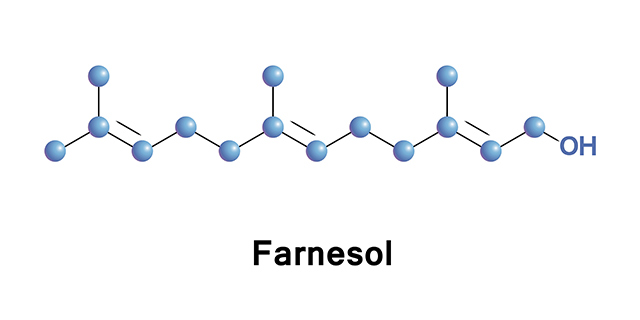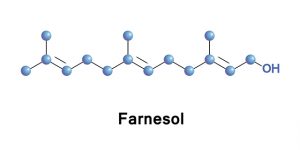
Farnesol sources, health risks
Thursday, November 02, 2017 by Frances Bloomfield
http://www.naturalpedia.com/farnesol-sources-health-risks.html

Farnesol is a sesquiterpene alcohol commonly found in many kinds of essential oils, such as those extracted from citronella, rose, star anise, and balsam. This colorless, hydrophobic liquid is widely used in perfumery to sweeten the aroma of floral perfumes, particularly the perfumes made from lilac. By itself, farnesol has a delicate and sweet odor that makes it a somewhat popular ingredient in the formulation of various cosmetics and personal care products.

Harmful effects that can be caused by farnesol
Farnesol has been listed as a restricted ingredient by the European Union (EU) Scientific Commission on Health and Consumers, meaning that there is only a certain percentage of this substance allowed in consumer products. This is because farnesol has been found to be a possible allergen or allergy-inducing substance. In the case of farnesol, it’s been linked to adverse skin reactions when used above certain concentrations in consumer products.
Individuals who are involved in the handling of farnesol should take care not to expose their eyes or skin to this substance. According to the Globally Harmonized System of Classification and Labelling of Chemicals, farnesol exposure can result in skin irritation, corrosion, or sensitization and eye irritation or serious eye damage. In addition, inhaling or ingesting farnesol can harm the respiratory and digestive systems.
Body systems harmed by farnesol
Farnesol poses the most danger to the skin due to it being a potential skin allergen. In addition to increasing the risk of skin sensitization, it can lead to skin irritation and corrosion.
Moreover, farnesol can harm the eyes and digestive and respiratory systems.
Where to learn more
Summary
Farnesol is an aromatic substance that is considered a restricted ingredient by the E.U. due to it being an allergen.
Farnesol can be harmful to those involved in handling it; exposure can lead to skin and eye irritation.
Farnesol has been known to damage the respiratory and digestive systems through inhalation or ingestion.
Sources include:
Tagged Under: Tags: Farnesol





